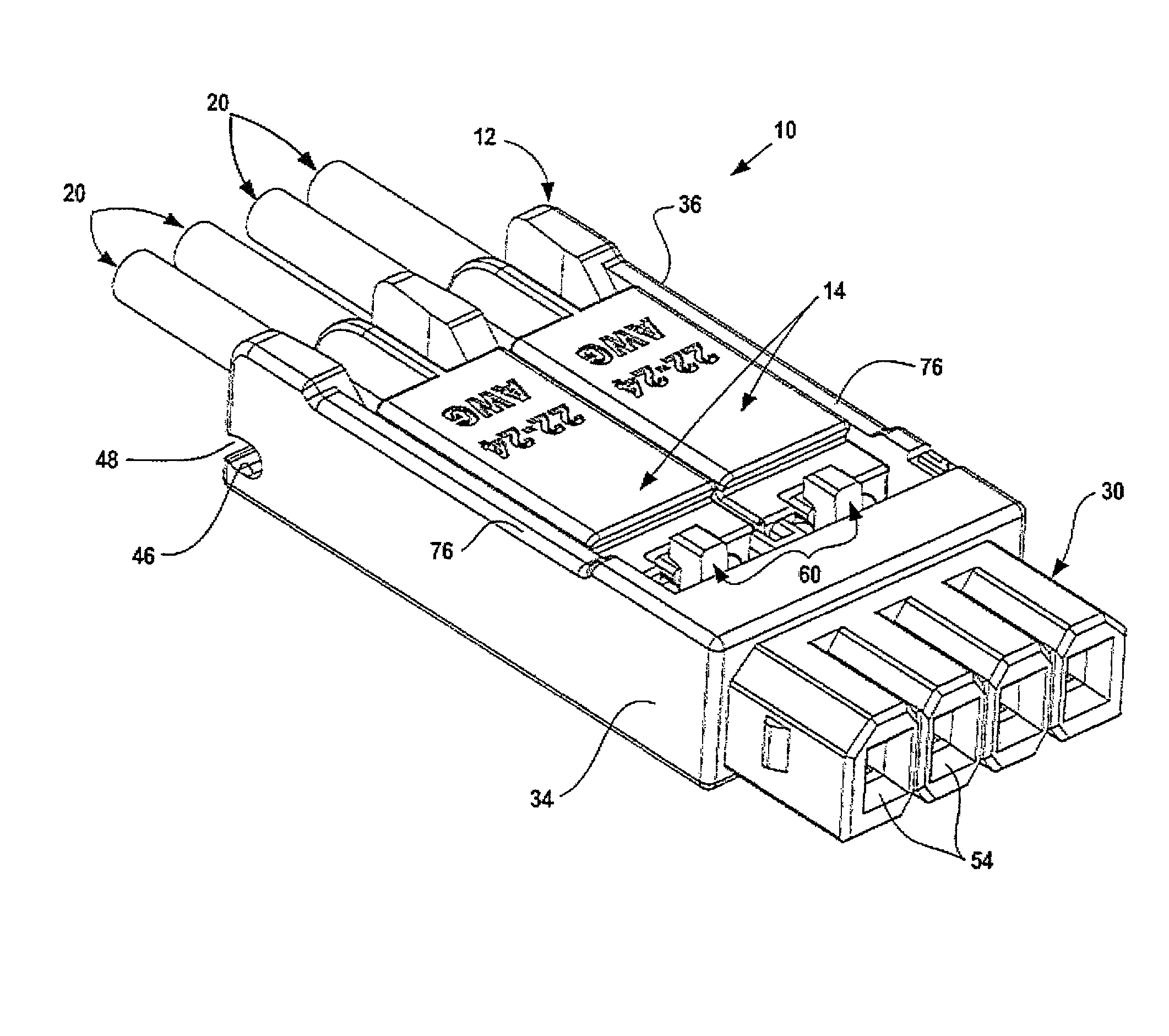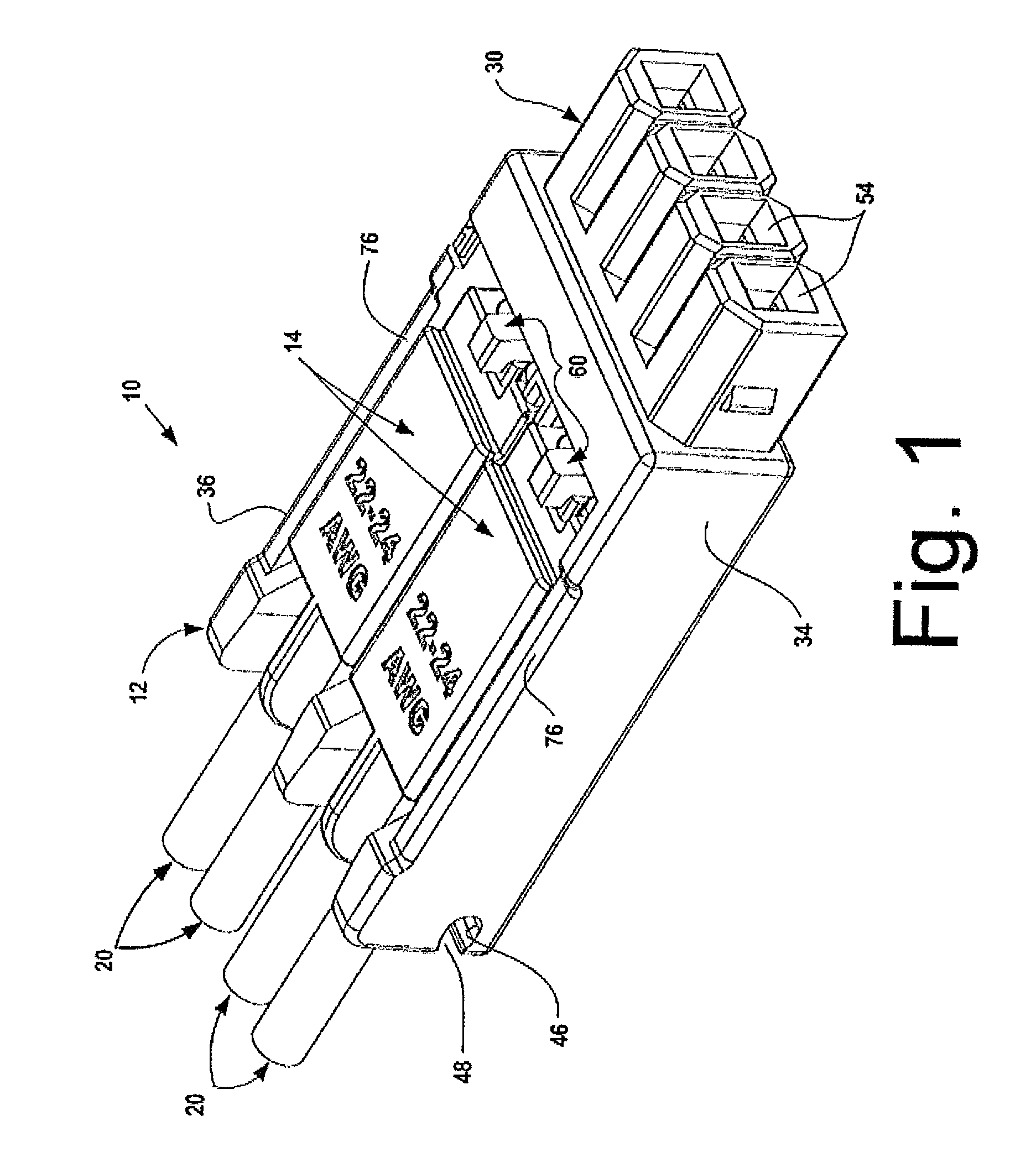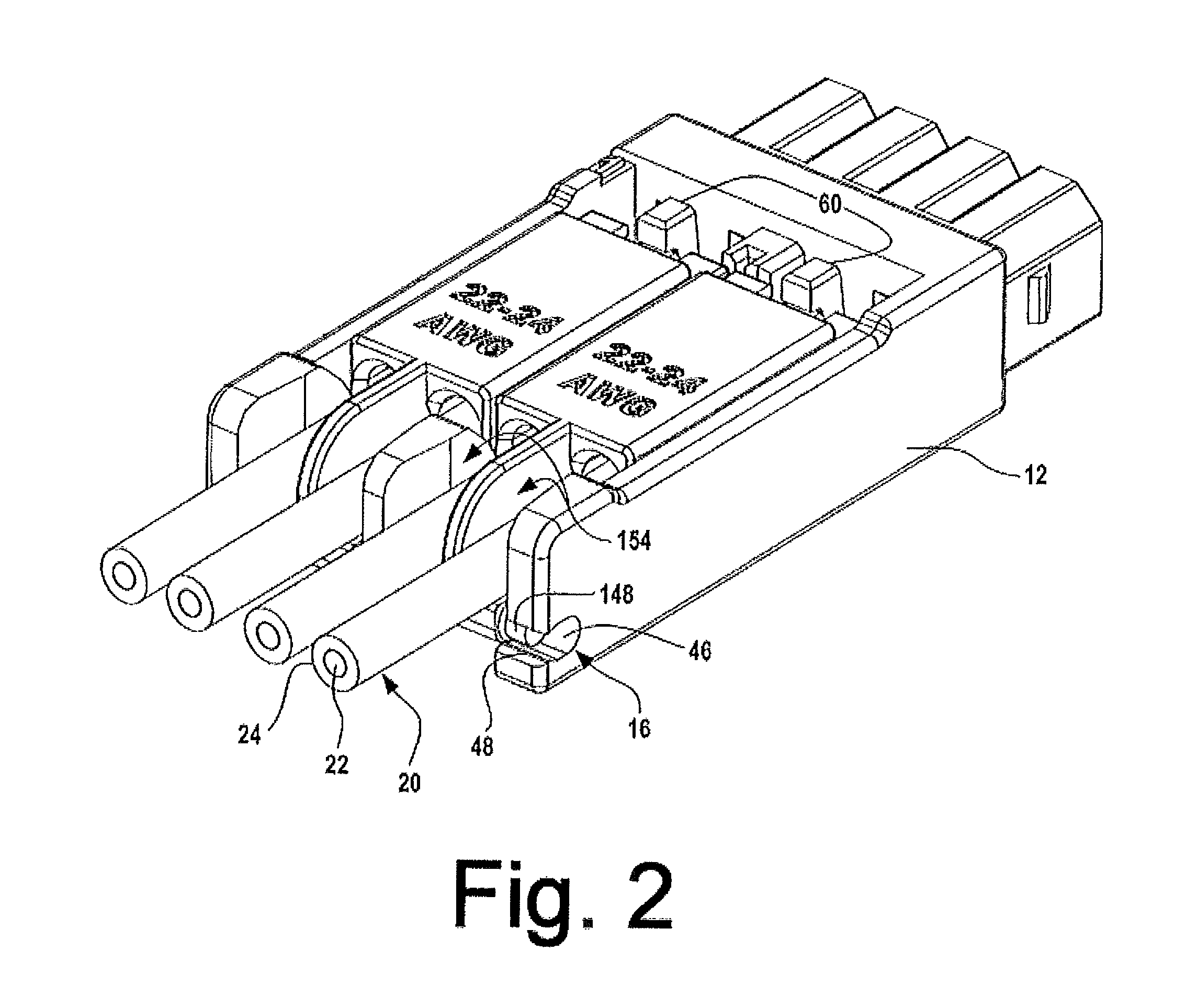Electrical connector assembly and method
a technology of electrical connectors and connector assemblies, applied in the direction of coupling device connections, coupling device details, contact members penetrating/cutting insulation/cable strands, etc., can solve the problems of inability to accurately locate the contact point of insulation displacement with the conductor in the wire, cumbersome two-step procedures, complex and inconvenient,
- Summary
- Abstract
- Description
- Claims
- Application Information
AI Technical Summary
Benefits of technology
Problems solved by technology
Method used
Image
Examples
first embodiment
[0034 electrical connector assembly 10 is illustrated in FIGS. 1-20 of the drawings. Assembly 10 includes a molded plastic base 12 and two molded plastic wire carriers 14 pivotally mounted on the rear end of the base at hinge connections 16. Four metal contact members 18 are mounted in base 12 for forming redundant insulation displacement electrical connections with wires 20 inserted in carriers 14. Two wires are inserted into each wire carrier.
[0035]Wires 20 typically have small diameters and small central stranded metal conductors 22 surrounded by an insulating sheath 24, which may be made of PVC. The electrical connector assembly 10 shown in FIG. 1 forms reliable electrical connections with AWG 22 or AWG 24 wires 20. FIG. 14 illustrates an alternative wire carrier 174 for making connections with AWG 26 wires.
[0036]AWG 22-26 wires are very small. AWG 22 wire has a diameter of 1.6 mm and a stranded conductor having a diameter of 0.65 mm. AWG 24 wire has a diameter of 1.4 mm and a s...
second embodiment
[0084]FIGS. 21-28 illustrate a second embodiment electrical connector assembly 200 related to assembly 10 having a molded dielectric base 202 and molded dielectric wire carrier 204. The wire carrier 204 is pushed straight down into or translated into the base to establish insulation displacement electrical connections. Assembly 200 uses components identical to components of assembly 10. Reference numbers describing components of assembly 10 which are used in assembly 200 are identified using the previously introduced reference numbers.
[0085]Base 202 is similar to base 12 and includes bottom wall 28, slots 56 in the bottom wall, side walls 34 and 36 and contact housing 30 extending across the front end of the base. Metal contact members 18 are fitted in slots 56 with contact elements 90 in housing contact chambers 50.
[0086]Wire carrier 204 includes a rectangular molded plastic body 206 with four spaced wire passages 140 extending from the rear to the front of the body. Cylindrical wi...
PUM
 Login to View More
Login to View More Abstract
Description
Claims
Application Information
 Login to View More
Login to View More - R&D
- Intellectual Property
- Life Sciences
- Materials
- Tech Scout
- Unparalleled Data Quality
- Higher Quality Content
- 60% Fewer Hallucinations
Browse by: Latest US Patents, China's latest patents, Technical Efficacy Thesaurus, Application Domain, Technology Topic, Popular Technical Reports.
© 2025 PatSnap. All rights reserved.Legal|Privacy policy|Modern Slavery Act Transparency Statement|Sitemap|About US| Contact US: help@patsnap.com



